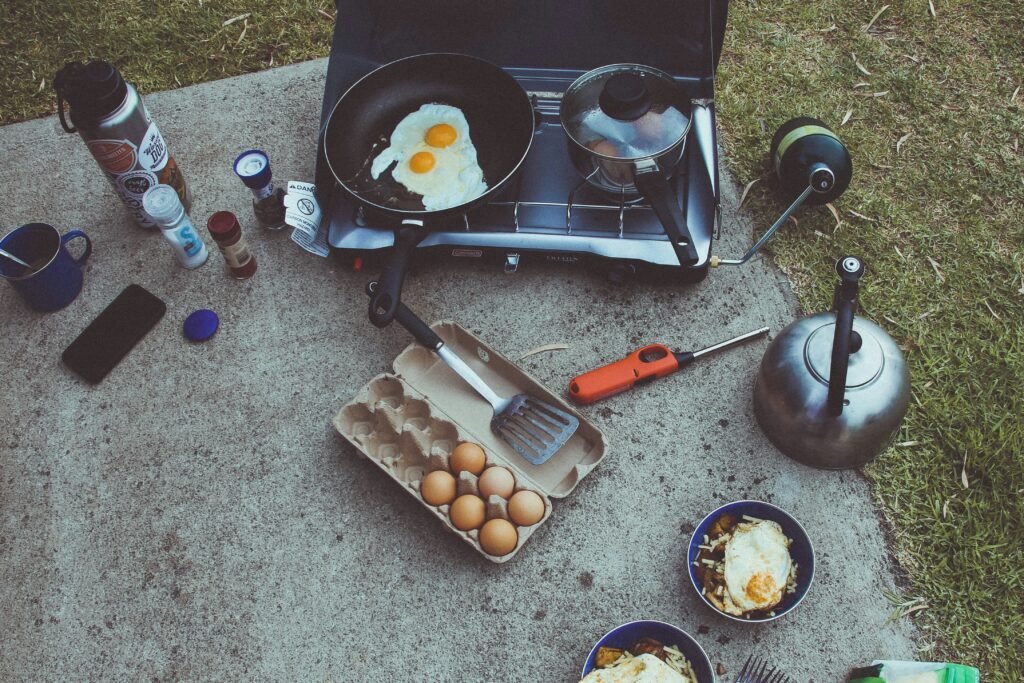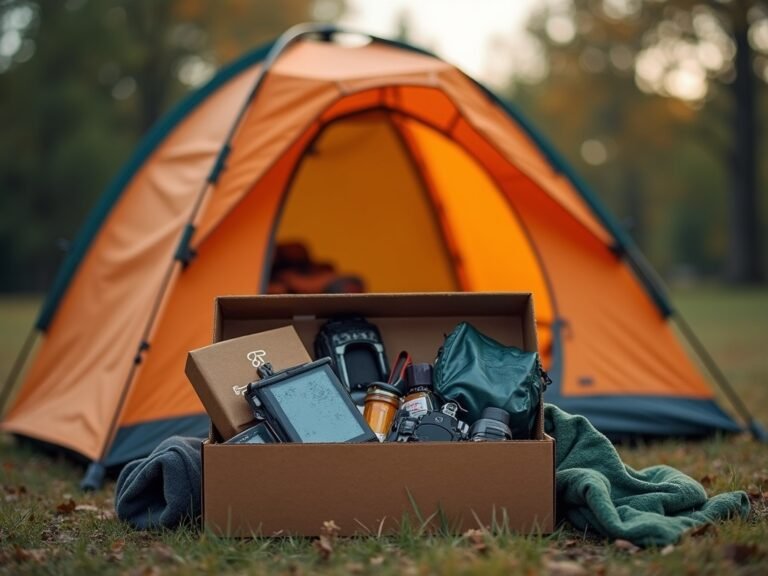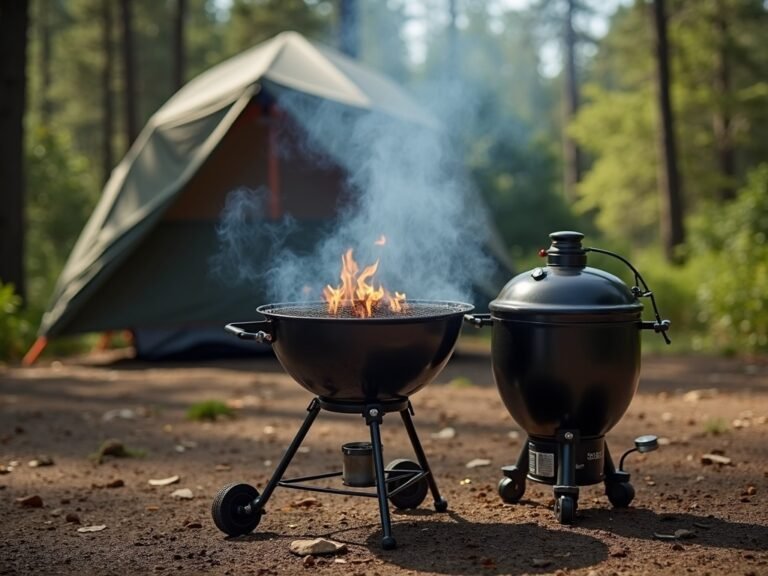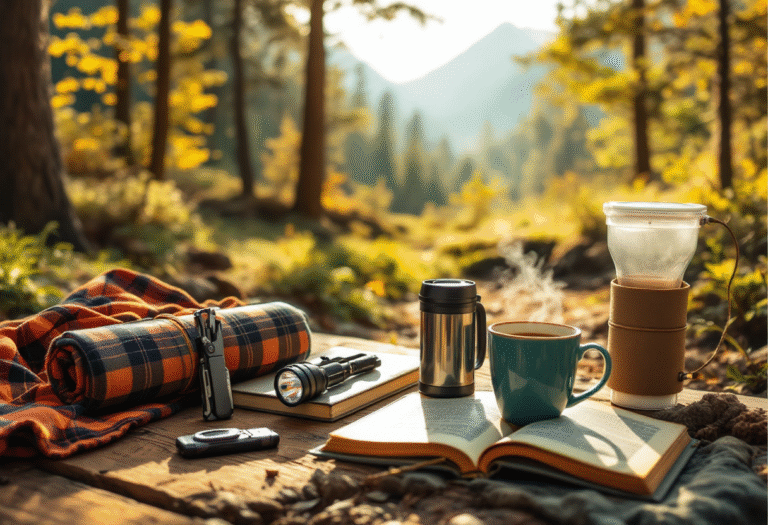Essential Camp Cooking Gear for Outdoor Foodies

Introduction
When the wilderness becomes your dining room, having the right camp cooking gear can mean the difference between bland sustenance and mouthwatering backcountry cuisine. Imagine searing a perfectly marinated steak under the stars, or simmering a hearty stew as the sun dips below the treeline. The magic lies not just in the ingredients, but in the tools you bring. Today’s Camp Kitchen Essentials go far beyond a rusty pan and a half-melted spatula. We’re talking about compact, flame-efficient stoves, nesting cookware that packs tighter than a bear-proof canister, and utensils engineered for both durability and delight.
The advantage? You cook faster, cleaner, and with way more flavour, leaving more time to explore, relax, or tell ghost stories by the fire. With these Cool Camp Kitchen Accessories, whipping up gourmet meals miles from civilization feels less like a survival chore and more like an open-air culinary adventure. Whether you’re a seasoned trail chef or just starting to level up from freeze-dried bags, the right gear transforms your entire outdoor dining experience. Let’s unpack the essentials that’ll turn your next campfire meal into a backwoods banquet.
Let’s dig in!
Why the Right Camp Cooking Gear Matters
Imagine arriving at your campsite, stomach grumbling, only to find out you forgot the stove fuel or don’t have enough pots to cook your meal. Sound familiar? We’ve all been there—which is why planning ahead with the right gear can save time, stress, and a whole lot of hunger.
Good cooking gear does more than just prepare meals. It:
- Makes cooking outdoors more enjoyable
- Saves time and energy
- Minimizes mess and cleanup
- Enhances your meals, making campsite cooking a pleasure rather than a chore
Now, let’s get into the must-haves for your next outdoor cooking adventure.
Your Camp Kitchen Essentials
There’s no one-size-fits-all when it comes to preparing food in the wild. Your gear will vary depending on how you’re camping. Are you car camping with the family? Backpacking solo? Glamping with friends?
Regardless of how you camp, these staples are the foundation of any functional camp kitchen setup.
1. Camp Stove: Your Outdoor Campfire Alternative
Unless you’re cooking over an open flame, a camp stove is your trusty sidekick.
Most people go with a two-burner camp stove for car camping. These stoves offer plenty of cooking space and work similarly to a home stovetop. If you’re backpacking, a compact canister stove is lightweight and stows easily in your backpack.
Popular stove options:
- Two-burner propane stoves – Great for families or groups cooking full meals
- Canister stoves – Lightweight and perfect for solo or minimalist campers
- Liquid fuel stoves – Reliable in cold weather or high altitudes
Pro tip: Always pack extra fuel and test your stove before you head out.
2. Cookware: Pots, Pans & Beyond
You wouldn’t use a steak knife to spread peanut butter, right? Cooking in the outdoors means using the right tools for the right jobs. Knowing what to bring makes kitchen tasks smoother and food tastier.
Essential cookware for camping:
- Non-stick skillet or frying pan – Perfect for eggs, pancakes, or stir-fry
- Camping pot or saucepan – Ideal for boiling water, soups, or prepping pasta
- Multi-use pan set – Stackable, lightweight, and easy to clean
If you’re backpacking, a single pot might be all you need, especially if you’re reheating or cooking freeze-dried meals. Car campers can add extras like a Dutch oven or griddle if space allows.
Remember: Go for hard-anodized aluminum or stainless steel—durable, lightweight, and built for heat distribution.
3. Cooking Utensils: The Unsung Heroes
A chef is only as good as their tools, and the same goes for campsite cuisine.
You’ll want a small kit with utensils that get the job done. Nothing fancy, but built to last.
Must-have cooking utensils:
Don’t forget the cutting board and a small bottle of camp-safe soap for cleaning up afterward.
4. Food Storage and Organization
How you pack your food plays a huge role in your camp experience. No one likes soggy snacks or mixing raw meats with fruits.
Smart food storage tips:
- Pack reusable containers – Keeps food fresh and reduces waste
- Use labeled, resealable bags – For seasonings, dry ingredients, and leftovers
- Coolers with dividers – Separate drinks from perishables
Pro tip: Freeze water bottles or meat beforehand to help keep things cool longer.
5. Cleaning and Dishwashing Supplies
Let’s face it—no one enjoys the cleanup part. But with a system in place, it doesn’t have to be messy or time-consuming.
Bring these dishwashing extras:
- Two basins – One for washing, one for rinsing
- Biodegradable soap
- Sponge and scrubber
- Quick-dry towel
Make clean-up a group task, and suddenly, it’s done before you say s’mores.
Outdoor Cooking Tips for a Smooth Setup
Now that you know what gear to bring, how do you cook like a pro in the wild? A few smart adjustments can help transform your camp kitchen into a five-star food prep station—under the stars, of course.
Make a Meal Plan
Before you even start packing, ask yourself:
“What meals will we actually eat?”
Plan every meal and snack, right down to the condiments. This avoids overpacking and cuts down on food waste. It also means you won’t show up with three cans of beans and no can opener. (Been there!)
Prep at Home
Chop veggies, marinate meats, and pre-mix pancake batter before you leave. Then store everything in labeled containers or resealable bags. Less mess, more time to chill around the campfire.
Keep It Simple
Stick to recipes with few ingredients and short cook times. No one wants to be tied to the stove when there’s hiking or stargazing to do. Think: chili, stir-fry, pasta dishes, and foil packet meals.
Cool Camp Kitchen Accessories Worth Packing
Want to elevate your outdoor recipes? These extras may not be essential, but they sure are nice to have.
- Portable grill grate – For open-fire cooking
- Camping French press – Because coffee is sacred
- Compact spice kit – For next-level flavor on the go
- Collapsible sink – Makes dishwashing way easier
- LED lantern – Camp kitchens need lighting at night
These little comforts can turn a basic campsite into a cozy home-away-from-home.
Packing Your Kitchen: What Goes Where?
Ever dug through your gear box for a spoon… only to find it in your sleeping bag? Staying organized can save you loads of frustration.
Try packing your camp kitchen like this:
- Box 1: Stove, fuel, utensils, small gear
- Box 2: Cookware, dish tubs, cleaning supplies
- Cooler: Meats, dairy, veggies
- Dry bag or tote: Bread, snacks, seasonings, dry goods
Labeling each container makes setting up and breaking down camp quick and painless.
Leave No Trace: Cooking Responsibly Outdoors
One golden rule of camping: leave every site better than you found it. That includes how you cook, eat, and clean.
Follow these simple habits to protect the outdoors we all love:
- Use biodegradable soap at least 200 feet from water sources
- Never throw food scraps into lakes, streams, or the ground
- Pack out all trash, even fruit peels
- Use established fire rings or stoves rather than creating new fire pits
When we respect nature, it’ll keep welcoming us back.
Sample Camp Menu Ideas
Not sure what meals are “camp-friendly”? Here are some easy and tasty options to test out during your next trip:
Breakfast
- Oatmeal with dried fruit and nuts
- Pancakes with maple syrup
- Breakfast burritos with scrambled eggs and veggies
Lunch
- Sandwiches or wraps
- Trail mix, cheese, and crackers
- Leftover chili or soups
Dinner
- Pasta with jarred marinara and sausage
- Stir-fried rice and vegetables
- Grilled chicken foil packets
Treats
- Campfire-roasted s’mores (of course!)
- Popcorn over the fire
- Hot cocoa before bedtime
Cooking outdoors doesn’t mean eating bland meals. A little planning and creativity go a long way.
Final Thoughts: Make Cooking Part of the Adventure
Camp cooking is more than just a necessity—it can be part of the fun. It’s a chance to bond with your group, feel self-sufficient, and maybe even learn new skills.
So whether you’re boiling water for coffee at sunrise or grilling burgers as the sun sets, having the right camp cooking gear means you’ll always be ready to whip up something delicious.
And remember—don’t stress over having top-of-the-line equipment. Start with the basics, build over time, and most of all—enjoy the ride (and the meals)!
Need a Camp Kitchen Checklist?
Here’s a quick wrap-up of what to bring:
Basic Camp Kitchen Checklist:
- Camp stove + fuel
- Cookware (pot, pan, kettle if needed)
- Cooking utensils (spatula, tongs, spoon)
- Plates, bowls, and eating utensils
- Cutting board + knife
- Cooler + ice or frozen packs
- Reusable food containers
- Seasonings/spices/oil
- Biodegradable soap + sponge + drying towel
- Reusable water bottles or jugs
- Trash bags or bins
So, what’s cooking at your next campground?
Whether it’s chili over flames or pancakes at dawn, great meals start with great gear—and now you have all the tips to do it right.
Happy camping!
Got a favorite camp dish or cooking hack? Share it with us in the comments!



